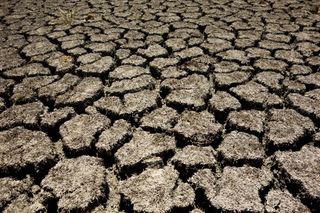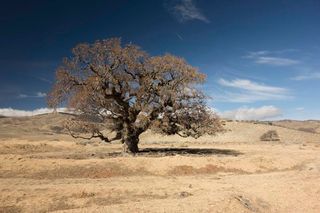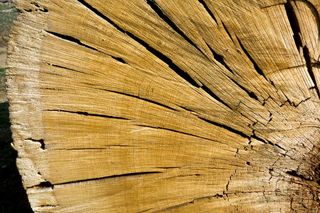California's Worst Drought Ever Is 1st Taste of Future

The drought now plaguing California is the worst to parch the central and southern parts of the state in the last 1,200 years, a new study finds.
The 2012 to 2014 drought's lack of rain isn't remarkable on its own, according to tree-ring records reported in the study. There have been three-year periods when less rain and snow fell. But the current drought comes at a time of extreme heat. Record-high temperatures exacerbated the drought, creating the driest soil conditions since the 9th century, according to the study, published Dec. 3 in the journal Geophysical Research Letters.
"Precipitation is not the whole story for California drought," said lead study author Daniel Griffin, a tree-ring researcher at the University of Minnesota in Minneapolis. "When we factor in temperature, this drought really stands out as an extreme and unprecedented case for the past 1,200 years." [The 5 Worst Droughts in US History]

The new study was driven by curiosity, the researchers said. With the long view of a paleoclimatologist, co-author Kevin Anchukaitis said he was skeptical that the recent drought could be worse than some of California's driest years. For instance, in 1580, one of the thirstiest years in the tree-ring record, rivers flowed at just a quarter of their usual volume, and giant sequoias grew no new wood. "Anytime you think it's bad, we say, 'You should have seen this [year],'" said Anchukaitis, a scientist at the Woods Hole Oceanographic Institution in Massachusetts.
To look back at water conditions 800 years ago, Griffin and Anchukaitis collected tree-ring samples from 278 blue oak trees in central and southern California. These trees grow only in California and are extremely sensitive to rainfall — their rings are clearly wider during wet periods, and pinched during dry spells. "These blue oaks are just like rain gauges," Griffin said. The researchers merged their data with 1,200 years of records from the North American Drought Atlas, a database of drought reconstructions based on tree rings from species including California bristlecone pines and giant sequoias.
Then, to compare drought years past and present, the scientists estimated soil moisture levels according to the Palmer Drought Severity Index (PDSI), a measure of precipitation and evaporation. (Soil moisture is an important index in the state, which grows about half the nation's vegetables, worth $10 billion.)
Based on precipitation alone, the tree-ring records confirmed the researchers' gut instincts: There were past droughts that saw less rainfall. However, in terms of PDSI soil moisture, both 2014 alone and the cumulative three-year drought are the worst in 1,200 years, the study found.
Sign up for the Live Science daily newsletter now
Get the world’s most fascinating discoveries delivered straight to your inbox.
"I don't think we had a good idea it was going to be so severe," Anchukaitis said. "It was surprising to us."

California's climate history is marked by much longer droughts, including megadroughts lasting 100 years, and several decades-long droughts. There were also 66 short-term dry periods that lasted between three and nine years during the 1,200 year study period, which makes the current drought just one of many minor dry spells, if only the lack of rain is considered.
But the one-two punch of high heat and low rainfall is the first taste of what's to come as climate change raises temperatures in the West, the researchers said. "Drought is going to continue to happen, and sometimes, it will be exceptionally severe," Griffin said. "This drought is a harbinger of what we can expect in the future."
California's heat waves will make 2014 the warmest year in the historical record, according to the National Weather Service office in Hanford, California. The heat means the air evaporates more moisture from plants and the soil. Heat waves also cause more evaporation from streams, rivers and the mountain snowpack.
Despite a good soaking this week from a series of storms, a little more than 55 percent of California remains in exceptional drought, according to the latest U.S. Drought Monitor report released Thursday (Dec. 4). Northern and central California need 18 to 21 inches (46 to 53 centimeters) of rain to end the drought, according to the National Weather Service's Climate Prediction Center.
Follow Becky Oskin @beckyoskin. Follow Live Science @livescience, Facebook & Google+. Originally published on Live Science.

